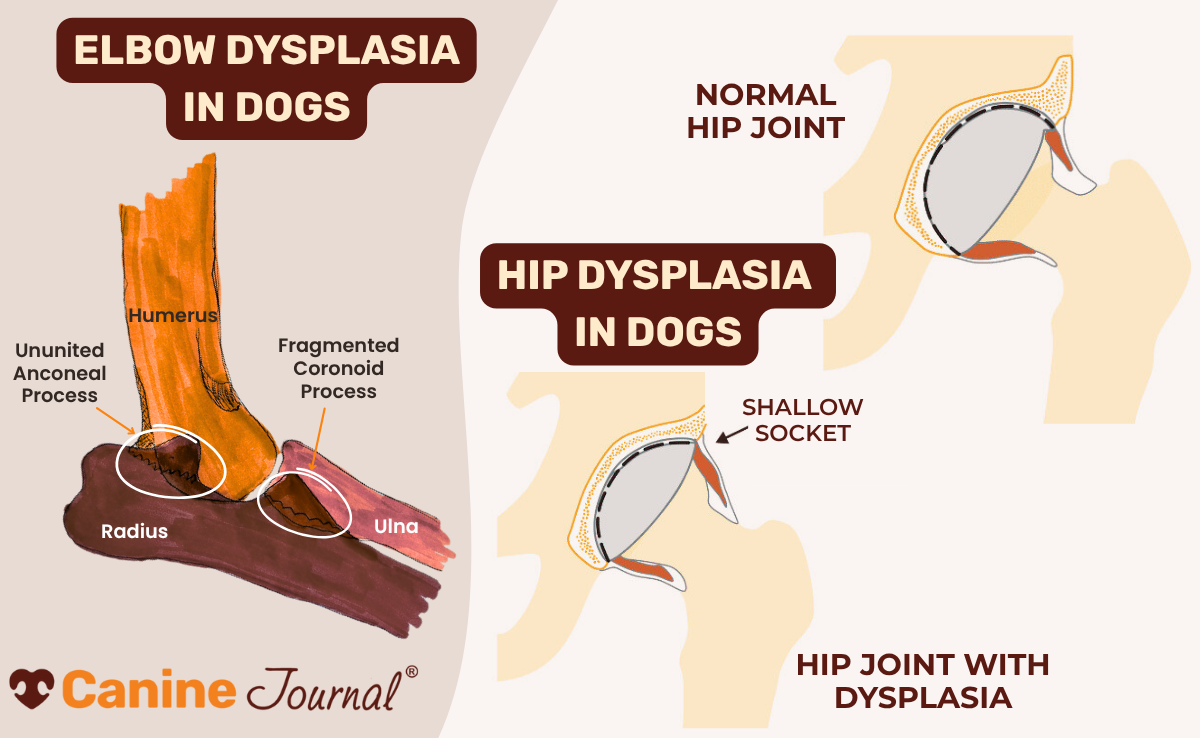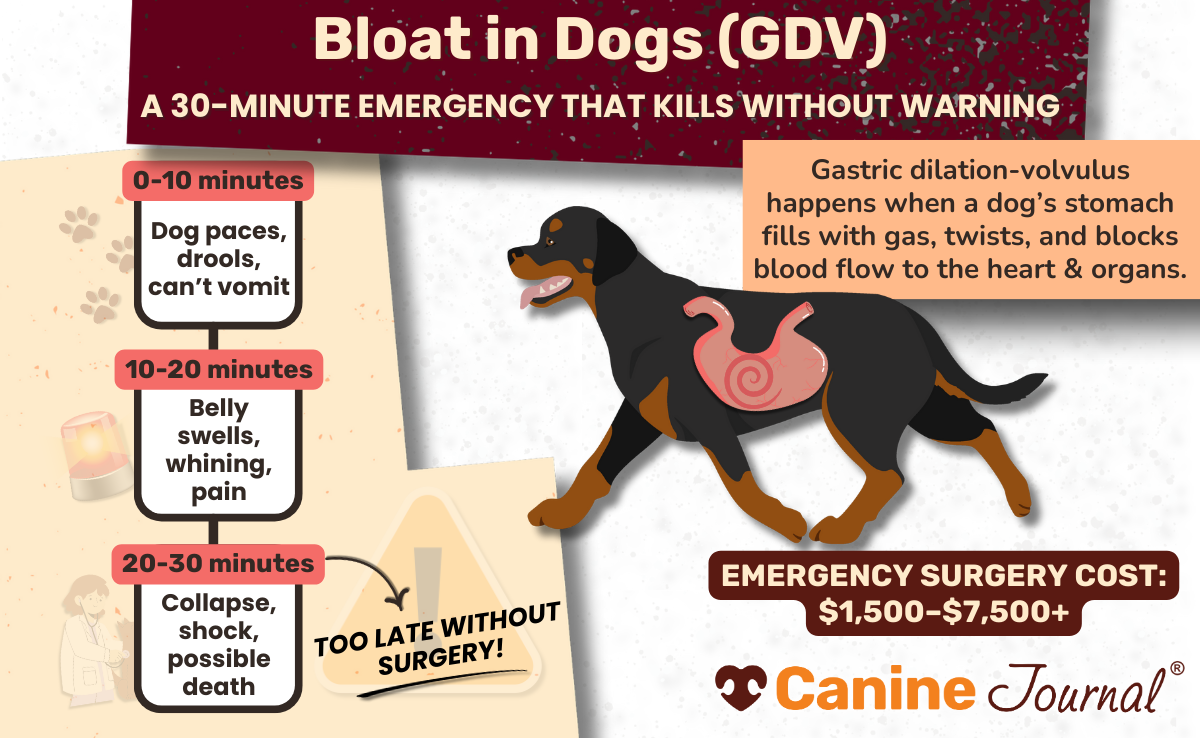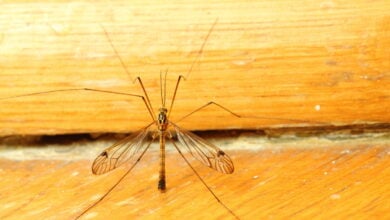10 Rottweiler Health Issues Vets Wish You Knew Sooner
When you purchase through links on our site, we may earn a commission. Here’s how it works.
Your Rottie’s tail might be wagging, but inside, something serious could be brewing. These big, lovable dogs are known for their strength and loyalty, but under the surface, they’re prone to a surprising number of health problems.
Table of Contents
Some show subtle symptoms, but many show zero until they’re serious (or expensive). So, I’ve compiled the top 10 Rottweiler health issues that vets say they often see too late. If you catch these Rottweiler health problems early, you could save your dog years of pain and yourself thousands in emergency bills.

How Pet Insurance Can Help With Rottie Health Issues
Rottweilers have an average lifespan of 8 to 10 years. Unfortunately, they are prone to several health conditions that can be very serious and require extensive treatment. Consider getting pet insurance coverage for your Rottweiler to help balance the cost of care.
Pet insurance policies can help cover medical care expenses, and often, the difference may be between providing your dog the best care or only offering what you can afford.
Most of the time, pre-existing conditions are not covered. So, it’s crucial to secure coverage for your Rottie from a young age or when you first adopt them as an adult, ensuring you and your Rottie receive the most benefits.
You can learn more about what pet insurance is and what it covers in our comprehensive is pet insurance worth it guide. We have also reviewed the best insurance providers for Rottweilers. You can also utilize our free quote form below to help determine the cost of insurance and what your budget can afford.

10 Common Rottweiler Health Issues
I asked Dr. Rebecca MacMillan, BVetMed BSAVA PGCertSAM MRCVS, to explain a little about Rottweiler health issues. With insight from Dr. MacMillan and thorough research, I’ve rounded up the 10 most common Rottie health concerns.
This list is not comprehensive, so it is best that you discuss any health concerns about your Rottweiler with your veterinarian. This article is for informational purposes only; it offers general information and is not intended to be a substitute for medical advice or to treat any individual dog’s health needs.

1. Hip & Elbow Dysplasia
Hip dysplasia is one of, if not the most common, health concerns for Rottweilers. This hereditary condition affects the hip joints, resulting in a misalignment that prevents them from forming a proper ball and socket.
Abnormal joint formation causes pain and can impact mobility. It can also lead to osteoarthritis and degenerative joint disease. Dysplasia can also affect the elbow joints, causing pain, arthritis, and even lameness.
Dr MacMillan adds, “Hip dysplasia is common in Rottweilers. The condition is hereditary, so dogs suffering from the condition should never be used to breed. Reputable breeders should have their dogs hip-scored, with x-rays taken by a vet, to reduce the chances of passing problems on to their offspring. Elbow dysplasia is another inherited joint problem that should be screened for before mating. Screening doesn’t eliminate the chances of a puppy getting the condition, but can significantly reduce it.”
Symptoms
- Limping
- Stiffness in joints
- Hopping gait
- Grating in the hips
- Lameness in the back legs
- Loss of muscle mass
- Pain
Diagnosis & Treatment
Your vet will examine your dog’s back legs to check joint movement, flexibility, and signs of pain or looseness. They may also run blood tests for inflammation and review your dog’s medical history and symptoms. X-rays are often needed to confirm hip dysplasia.
If diagnosed, treatment depends on severity. Mild cases may be managed with weight control, limited exercise, physical therapy, medications, and supplements. Severe cases might require surgery, including procedures to improve joint function or a full hip replacement.

2. Osteochondritis Dissecans (OCD)
Osteochondritis dissecans (OCD) is a joint disease that often affects large breeds like the Rottweiler. It is more common in male dogs and occurs between six and nine months. The disease causes the cartilage to separate from the bone. It most commonly affects the shoulder, knee, and ankle joints.
Joint surfaces (the articular cartilage) fail to form bone in some spots, resulting in areas of thickened cartilage. These damaged areas cause the thickened cartilage to separate from the healthy tissue that surrounds it, forming a flap. The flap of cartilage can detach from the joint surface, causing secondary osteoarthritis.
Symptoms
- Not bearing weight on the leg
- Limping or intermittent lameness
- Pain
- Swelling
- Warm to the touch
Diagnosis & Treatment
Diagnosis typically includes a physical exam, medical history, and X-rays, though advanced imaging like CT or MRI may be needed. Treatment often starts conservatively with restricted exercise, pain relief, anti-inflammatories, supplements, and diet changes.
In more serious cases, surgery may be recommended. Most dogs recover well within a month, but some may need ongoing care for lasting symptoms.
3. Eye Issues
Rottweilers are prone to eye health issues. These include progressive retinal atrophy (PRA), cataracts, entropion (inward rolling of the eyelid), conjunctivitis, glaucoma, retinal detachment, and corneal ulcers.
Cataracts can cause eventual blindness, and PRA can also impact vision. It often starts with difficulty seeing in low light. PRA can cause night blindness in affected dogs and can be either early or late onset.
Symptoms
- Clumsiness
- Reluctance to go outside
- Night blindness
- Dilated pupils that take longer to respond to light
- Reflective eyes
- Cloudy eyes
- Eye irritation and rubbing
Diagnosis & Treatment
Diagnosis of PRA in dogs requires examinations and tests to see how the eye looks and works. There is no treatment for PRA; it can only be managed through lifestyle, training, and reducing hazards to your vision-impaired dog.
Cataracts require surgery, which can be very expensive, and entropion requires surgical treatment, too.
4. Hypothyroidism
Hypothyroidism is a condition in which the body doesn’t make enough thyroid hormone. This causes a dog’s metabolism to slow down. The thyroid controls many of the body’s other internal systems.
Hypothyroidism often presents in dogs between four and ten years old. The hormone imbalance can lead to weight gain, reduced energy, behavior changes, and poor skin and coat health.
Symptoms
- Unexplained weight gain
- Low energy
- Obesity
- Thinning coat
- Dull, dry fur and skin
- Recurrent ear and skin infections
- Slow heart rate
- Clumsiness
- Dark pigmentation on the skin
- Lameness
Diagnosis & Treatment
To diagnose hypothyroidism, your vet will assess symptoms and run blood tests to check cholesterol, kidney function, anemia, and thyroid hormone levels. If confirmed, treatment usually involves daily doses of levothyroxine, a lifelong synthetic hormone replacement. With proper care, most dogs respond well and can live a normal, healthy life.

5. Canine Parvovirus
Canine parvovirus, also called parvo, is a highly contagious infection caused by canine parvovirus type 2 (CP-V). Parvo attacks white blood cells in the intestinal tract and can damage the heart muscle in puppies.
While all breeds are at risk of canine parvo, some, including Rottweilers, have a much higher risk. Even vaccinated puppies are at risk, especially those between 6 and 20 weeks (5 months) old.
Diagnosis & Treatment
Parvo is diagnosed with a fecal SNAP test, though early tests can be falsely negative if the virus hasn’t started shedding. Symptoms typically appear 3–7 days after exposure.
There’s no cure, but intensive supportive care, including IV fluids, anti-nausea meds, feeding support, and electrolyte correction, can help dogs recover. Some cases may need monoclonal antibody treatment or antibiotics if sepsis develops.
My Personal Experience With Rottweilers And Parvovirus
My dog Jade, a purebred Rottweiler, caught parvo when she was about one year old. She was fully vaccinated, but another dog at the dog park came down with it. Several pups got sick, but Jade was one of the worst. She almost died.
It was very scary, and she required extensive hospitalization. She had to go to an emergency vet and then a vet hospital, where she stayed for over a week. When she came home, she was frail and took over a month to regain her full strength.
Not only was it an extremely challenging time because she almost died, but it was also taxing financially. The treatment cost over $5,000, which I paid out of pocket as we had not yet gotten pet insurance for her. I have never seen a dog get that sick before, and we are very lucky she pulled through.
6. Subaortic Stenosis (SAS)
Subaortic stenosis (SAS) is a congenital heart defect that can affect Rottweilers. It occurs when a scar-like narrowing occurs under the aortic valve. It is often present at birth or in the first year of life.
The defect makes it harder for the heart to pump enough blood through the body. The condition can worsen as a dog ages and can cause discomfort, weakness, and trouble breathing. Left untreated, dogs are at high risk of sudden death.
Symptoms
- Difficulty breathing
- Weakness
- Fainting
Diagnosis & Treatment
Diagnosis of SAS requires a thorough physical exam, evaluation for an irregular heartbeat or heart murmurs, and diagnostic images like chest X-rays, an electrocardiogram, or a cardiac ultrasound. Mild cases can be treated with limited activity and medication, but there is no cure for subaortic stenosis.
7. Panosteitis
Rottweilers are prone to panosteitis, a condition that impacts large-breed puppies that grow quickly. It can cause musculoskeletal pain and affect the long bones of the legs, most often the humerus.
This condition can also cause shifting lameness. It can last until dogs reach two or three years old. Lameness can last from a few days to a few weeks. It is cyclical, often with about a month or so between episodes.
Symptoms
- Sudden lameness in one or more legs
- Pain
- Fever
- Fatigue
- Weakened appetite
- Weight loss
Diagnosis & Treatment
To diagnose panosteitis, your vet will examine the painful limb and may take X-rays and blood tests to check for inflammation. Treatment focuses on managing pain with anti-inflammatories, restricting activity, and adjusting your dog’s lifestyle. Since appetite can drop during flare-ups, dietary supplements may also be recommended.
8. Osteosarcoma
Osteosarcoma is the most common bone cancer in dogs and is highly aggressive. These tumors form after the abnormal production of bone cells. It leads to the growth of malignant tumors and can spread rapidly without treatment.
If it is diagnosed early, there is a chance for life-saving surgery, often requiring amputation of a cancerous limb. It can be hard to catch because symptoms are mild and often not recognized in the early phases.
Dr. MacMillan adds, “Sadly, Rottweilers are also prone to cancer, in particular, osteosarcomas (bone cancer) and lymphoma (cancer of the blood and immune system). If caught early enough, some of these cancers can be treated through surgery or chemotherapy.
“This is why it is important to take your dog for regular vet checks as well as seek help sooner if you see anything you are worried about.”
Symptoms
- Pain
- Mass or lump on the body
- Difficulty breathing
- Nostril discharge
- Lameness or limping
- Weakness and fatigue
- Loss of appetite
- Pain
- Swelling in the ribs, legs, spine, or jaw
Diagnosis & Treatment
Diagnosis of osteosarcoma includes physical examination, fine needle biopsy, and X-rays. This may include X-rays of the chest to scan for metastasis in the lungs.
Treatment often includes amputation to remove the affected limb and prevent the cancer from spreading. Chemotherapy and radiation therapy may also be options.
9. Cranial Cruciate Ligament (CCL) Tears
Due to their larger size and extreme energy levels, Rottweilers are at a high risk of suffering from cranial cruciate ligament tears. These tears happen when the ligament of the knee joint tears due to injury. The torn ligament can cause joint instability, lameness, and pain.
The ligaments will also not heal on their own and cannot be fully repaired. If the injury does not get prompt treatment, there can be extensive damage to connective tissues as well as the development of degenerative joint disease.
CCL rupture is an incredibly common orthopedic injury in dogs and the most common cause of degenerative joint disease in the knee. It can affect all breeds, but is highly prevalent in larger, very active dogs.
Symptoms
- Crackling noise when bones rub against each other, and pain when the knee joint is touched
- Aversion to exercise and physical activity
- Decreased range of motion
- Extended hind leg in the sitting position
- Stiffness after exercise
- Swelling
- Inflammation and pain
Diagnosis & Treatment
Your vet will perform a physical examination and obtain a medical history, specifically asking for information about your dog’s injury and lameness. They will test the joints’ range of motion and assess joint stability. These tests require manipulation of the knee and might be done under anesthesia.
It can be treated through medical management involving pain medications, anti-inflammatory medications, and physical therapy. However, surgical treatment is most often recommended and offers a better outcome.

10. Canine Bloat or Gastric Dilatation-Volvulus (GDV)
Canine bloat, also called gastric dilation volvulus, affects large, deep-chested breeds like the Rottweiler. This life-threatening condition occurs after the stomach fills too quickly and begins to expand rapidly and twist in on itself.
It can be triggered by dogs eating or drinking too fast, pushing air into the stomach, causing it to overfill and then twist. The twisting blocks the blood flow, causing extreme swelling. Canine bloat is a medical emergency and requires immediate treatment. It can come on very suddenly and is often fatal.
Treatment & Diagnosis
Gastric dilation volvulus is a medical emergency. Dogs require immediate treatment to save their lives, and it often requires very expensive surgery. If caught in the very early stages, it can be treated by non-emergency surgery, IV fluids, and medication.
Canine bloat is not a condition that you can treat at home; there are no home remedies that will work. Dogs require medical treatment as soon as possible for the best chance of survival. This will involve an exam, X-rays, and other diagnostic procedures.

Other Health Conditions That Affect Rottweilers
This list is not comprehensive, and owners must be aware of other health conditions Rottweilers are prone to. These include dilated cardiomyopathy, a condition in which the heart muscle becomes enlarged and cannot pump blood through the lungs and body efficiently.
Rottweilers are also prone to von Willebrand disease and Addison’s disease. Other conditions to be aware of are obesity, inflammatory bowel disease, kidney disease, parasites, and allergies.

Average Costs For Rottweiler Health Issues
Caring for Rottweilers can be expensive due to their larger size, which means they eat more and are predisposed to some health conditions. Treatment can cost thousands of dollars for some health concerns.
According to Fetch pet insurance, the three most common conditions in Rottweilers they cover are vision disorders, hip dysplasia, and bloat or other gastric concerns. Associated costs for these health conditions over a lifetime are as follows:
- Vision disorders: $3,047 – $3,795
- Hip dysplasia: $4,220 – $5,500
- Bloat and other gastric issues: $2,023 – $3,498
Treatment of other conditions can be extremely expensive. For example, osteochondritis dissecans can range from $2,000 to $4,000 or more to treat. Osteosarcoma can cost upwards of $10,000 for diagnosis and treatment, and dilated cardiomyopathy can cost between $10,000 and $20,000 or more.

Fetch Customer Testimonial For a Rottweiler
Ava, a ten-year-old Rottweiler, suffers from seizures, which require regular treatment. Her owners have a Fetch Insurance plan with 80% reimbursement, a $300 deductible, and a $15,000 annual payout limit. Her monthly medication costs $29.93, and her owners pay $5.99. Fetch pays out $23.94, making the treatment much more affordable. You can learn more about Fetch in our individual review.
You can also learn more about what causes canine seizures, which can be brought on by epilepsy, an inherited condition, or other neurological issues that can affect all dogs, including Rotties.
A Healthy Diet Helps Keep Your Rottie Healthy
You cannot control your Rottweilers’ genetics or the health conditions they will ultimately develop; however, a healthy diet is the cornerstone of lifelong health. Paired with an active lifestyle and regular veterinary visits, a healthy, balanced diet provides your dog with a solid foundation.
This can help their overall well-being, vitality, quality of life, and longevity. We cover the best dog foods for Rottweilers, and you may also want to consider fresh dog food. These all offer above-average nutrition and high-quality fresh ingredients to provide your pup with the best nutrition possible.
Dr. MacMillan states, “Keeping your Rottweiler at a healthy weight is one of the best things you can do, as it will reduce unnecessary pressure on their joints, keeping them healthier and more mobile for longer. It may also reduce their risk of certain cancers.”
You can also learn how much to feed your Rottie in our Rottweiler feeding chart.
FAQs: Rottweiler Health Problems
I’ve answered some of the most often-asked questions about Rottweiler health issues. If I didn’t get to yours, let me know in the comments, and I will find the answer.
What Is The Leading Cause Of Death In Rottweilers?
Unfortunately, many Rottweilers succumb to cancer. Osteosarcoma, or bone cancer, is the most common cause of early death in Rotties. Unfortunately, even though there are treatment options available, bone cancer is hard to beat, especially for a big breed like the Rottie.
Do Rottweilers Have Neurological Issues?
Not generally, but like other breeds, they can be at risk for some rare neurological conditions.
Leukoencephalomyelopathy (LEMP) is an inherited neurodegenerative disease that attacks the central nervous system. The disease is a recessively inherited condition that causes a slowly worsening gait, dragging of the paws, and lesions on the spinal cord.
Rotties can also be susceptible to neuroaxonal dystrophy (NAD), which is a degenerative neurological disease that causes tremors and uncoordinated movements as well as involuntary eye movements.
Do All Rottweilers Develop Serious Health Conditions?
No, not every Rottweiler will develop any or all these medical conditions. While they are prone to some, not every dog within the breed will develop these conditions.
What Is The Blood Disorder That Affects Rottweilers?
Von Willebrand disease is a bleeding disorder that Rottweilers can develop. It is hereditary and caused by a lack of clotting agents.
What Should I Look for When Adopting or Buying a Rottweiler?
According to Dr. Rebecca MacMillan, “If you are adopting a Rottweiler, try to find out as much as you can about the dog, including whether it has ever shown signs of limping or lameness or had episodes of weakness and collapse.
“This will help you to understand whether your new dog may already have an underlying health complaint.”
If you are buying a puppy, make sure you purchase them from a reputable breeder with the relevant health screening. This will increase your chances of having a healthy dog.”
Caring For Large Dog Breeds
As someone who’s raised larger breeds like Rottweilers and Pitbulls that often carry a big reputation, I know firsthand that it is essential to be aware of the responsibilities of caring for a larger breed like this. They require food that is formulated for their larger size.
Rotties also need early training and socialization. This is especially important so they learn appropriate behavior in different situations around other people, children, and animals. Because Rottweilers have a reputation for being aggressive dogs, you must ensure they are well-trained and well-behaved.
To keep them, you, and other people safe, large breeds must have a secure yard, as well as harnesses, leashes, and collars that are strong enough to hold up to their heavier weight and larger size.
Has Your Rottie Faced Any of These Health Issues? We’d love to hear your story. Drop us a comment and share what helped your pup. Your experience could help another owner spot a symptom early or feel less alone.



